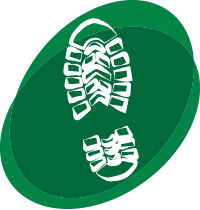One of the fundamental problems in footwear forensics is that the distribution of class characteristics in the local population is not currently knowable. Surveillance devices for gathering this data are just half of the battle — it is also necessary to process the data gathered using these devices and identify relevant features. This presentation will describe progress made in automatic identification of relevant footwear features – brand, shoe size, and tread pattern elements, as well as complications which arise when combining machine learning algorithms with human-friendly features. Using transfer learning to connect pre-trained neural networks to newly gathered and labeled training data, this method bridges the gap between unfriendly numerical features and descriptors used by examiners in practice. Leveraging both clean training data and “messy” data gathered from the local community using newly developed footwear surveillance devices, the authors will present developments in footwear forensics which will enable examiners to testify as to the frequency of class characteristics in the local population in the very near future.
Automatic Class Characteristic Recognition in Shoe Tread Images

Conference/Workshop:
American Academy of Forensic Sciences
American Academy of Forensic Sciences
Published: 2022
Primary Author: Jayden Stack
Secondary Authors: Rick Stone, Colton Fales, Susan Vanderplas
Type: Presentation Slides
Research Area: Footwear
Related Resources
Shoeprint Alignment and Comparison using Maximum Cliques
This presentation is from the 107th International Association for Identification (IAI) Annual Educational Conference, National Harbor, Maryland, August 20-26, 2023. Posted with permission of CSAFE.
An algorithm for source identification of footwear impressions—its application on pristine shoeprints and crime-scene like shoeprints
This presentation is from the 107th International Association for Identification (IAI) Annual Educational Conference, National Harbor, Maryland, August 20-26, 2023. Posted with permission of CSAFE.
CSAFE Project Update & ASCLD FRC Collaboration
This presentation highlighted CSAFE’s collaboration with the ASCLD FRC Collaboration Hub.
Source identification of shoeprints in mock crime scene using an algorithm based on automatic alignment
This presentation is from the 75th Anniversary Conference of the American Academy of Forensic Sciences, Orlando, Florida, February 13-18, 2023. Posted with permission of CSAFE


